Would You Rather? 98 slides
Dug up 98+ of my popular Would you rather? slides and I'm sharing them now here. (The key is to keep students explaining more.) Feel free to edit & redistro.
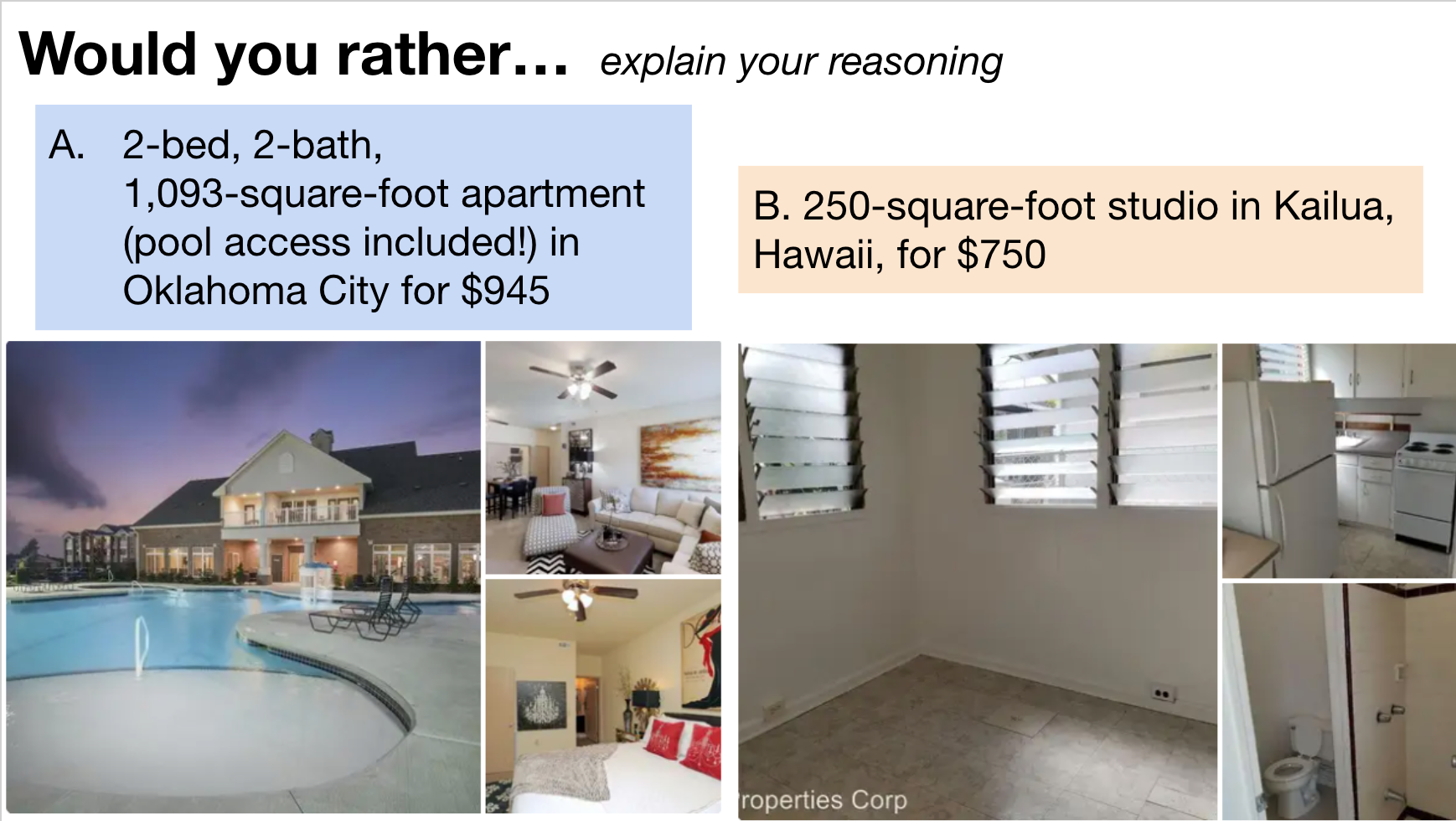
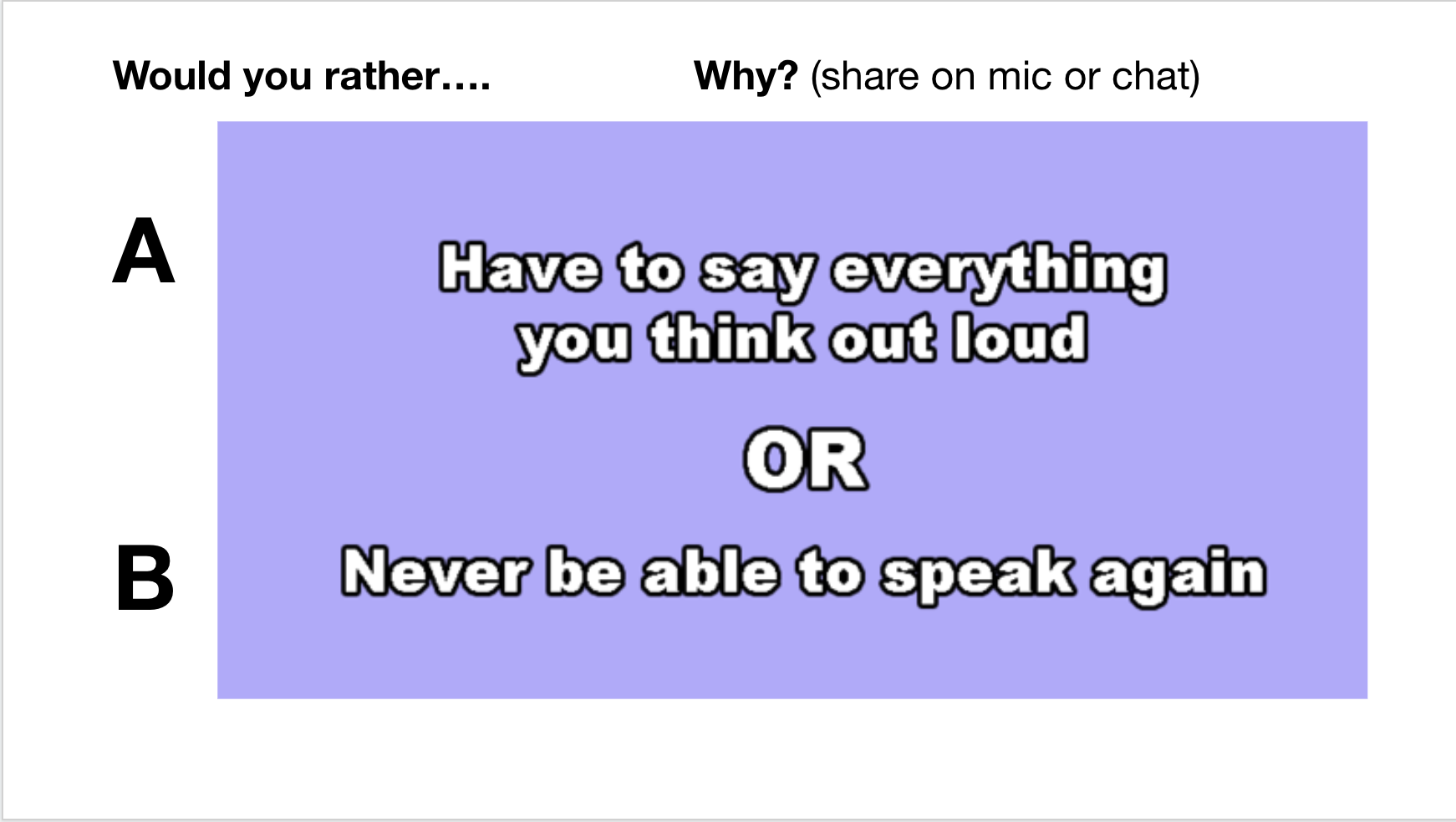
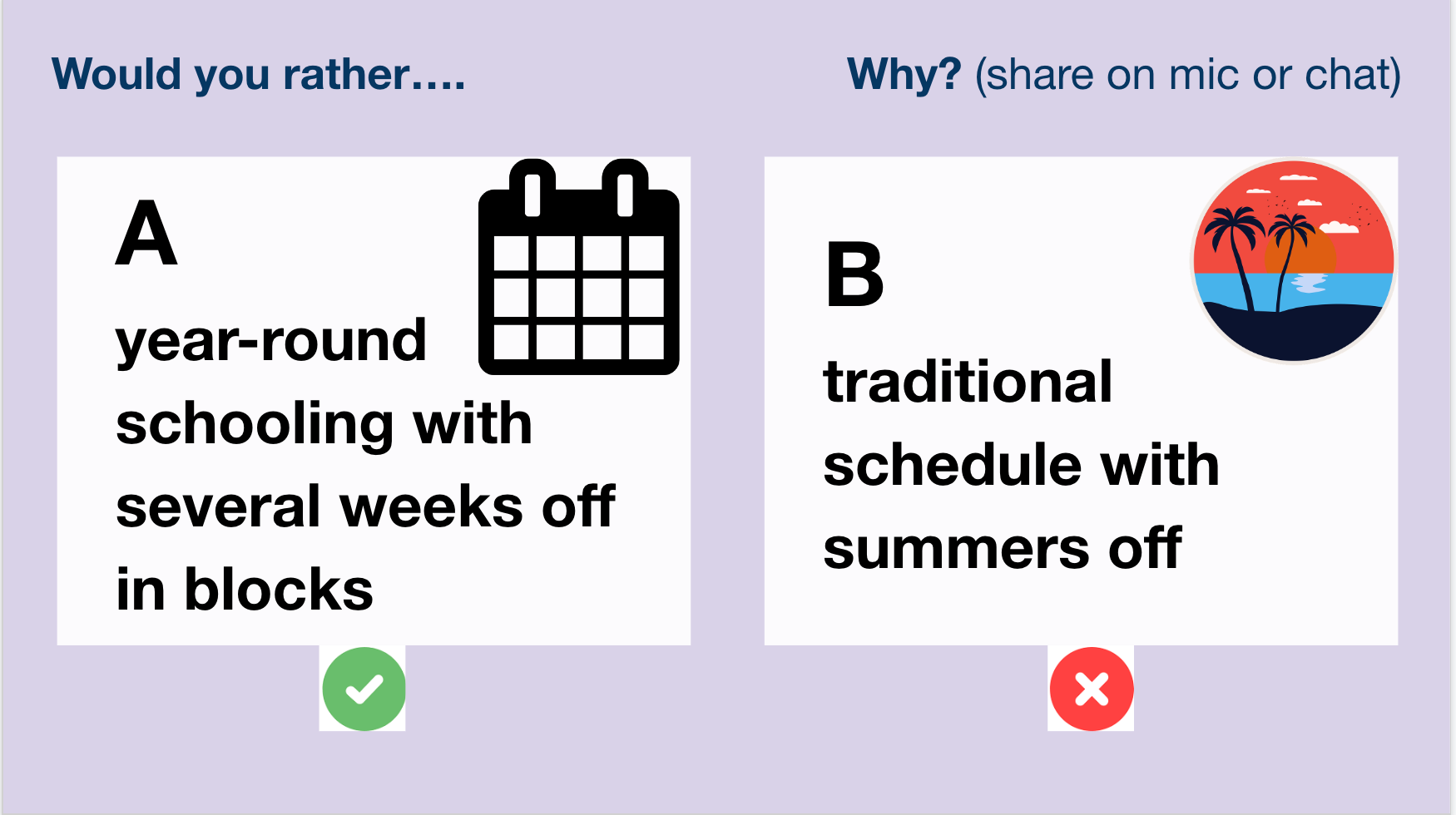
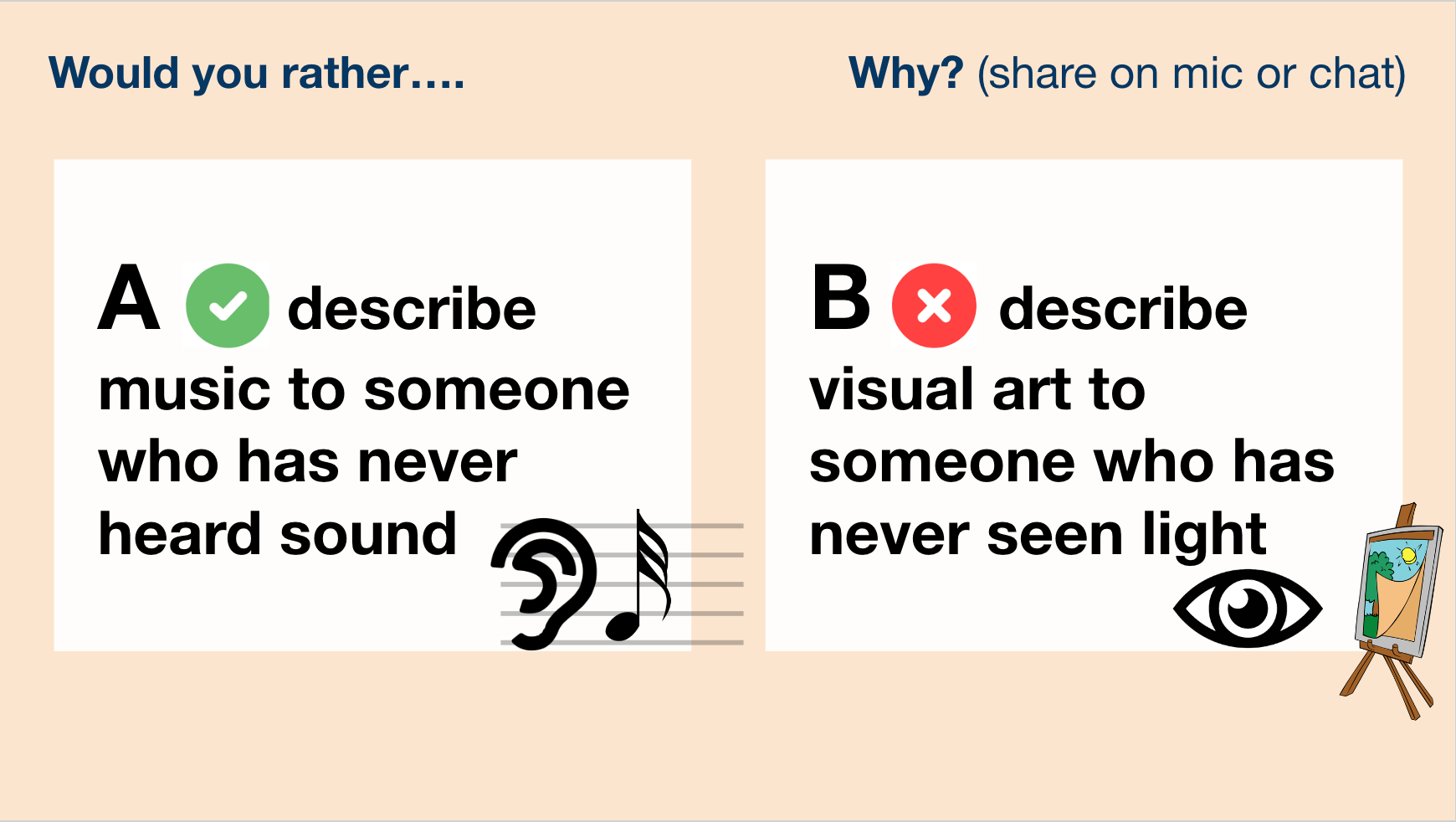
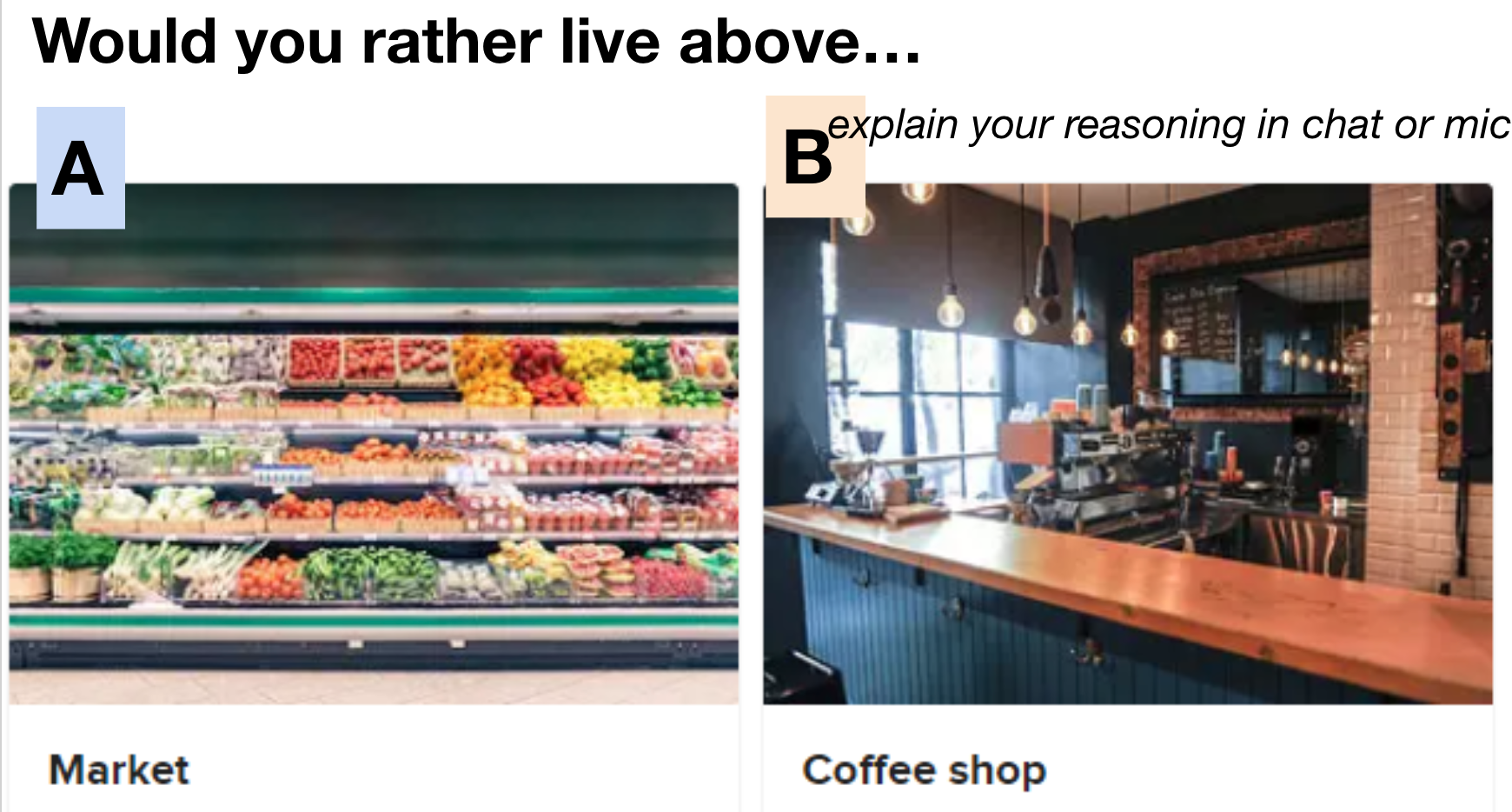
Dug up 98+ of my popular Would you rather? slides and I'm sharing them now here. (The key is to keep students explaining more.) Feel free to edit & redistro.



Suggested use:
1. Distribute pre-writing Doc: pre-writing document asking about the role of science in their lives and their experiences
2. Brainstorm answers for the first 3 (I used PollEverywhere).
3. Give feedback on Doc, assign slides & teach how to insert images. (I use Alice Keeler’s Pull 1x1 Tables in Docs to Sheets to get responses & push feedback.)
4. Distribute Forms where students describe and explain how each object relates to their prewriting answers.
5. Combine into final community slide deck of a research lab with multiple lab benches. Assign 3 to comment on.
Templates (at end so you can manipulate at your leisure) included. Now includes tutorial in slides for exporting as JPEG, and link to a great resource for researching different scientists: Lancaster’s Diverse Scientists Database.
The end of my "Build your Lab Bench" Slide activity, I ask students to redress the legacy of normative white supremacy in science today by researching and making a poster for themselves of a scientist who can inspire them throughout the year. I include the guiding research doc (they fill out the 1x1 tables & I push feedback through via a Sheets script). I have yet to make the tutorial for building a poster in Canva. (I'm thinking it might be too much app load for my students this early.)
Slide sources from #IamAScientist and Remezcla. Guided research Doc instead of Form so teacher can give multiple feedback drafts and connect w/ student. Doc links to Slides, A. Lancaster’s Diverse Scientists Database, and Spotlight on Scientists.
Summary: Sequence for thinking is:
Brainstorming survey on PollEverywhere: students use answers to help them complete first questions
what does a scientist look like,
who does science,
where is science done,
Independent work after class mtg:
science's role in my life & the world,
“build” my lab bench with 3 objects representing my science identity,
research different scientists and consider which courses they could be taught in,
select a specific scientist and make a poster about it to put in your lab bench
send in jpeg of lab bench slide and explanations of each object via google forms.
Final class product: Slide deck w/ slides of all the student lab benches.
Feel free to use, adapt, distribute without charge.
Acknowledgments
David Barrios via SFUSD's 2020 Launch unit
Amber Lancaster
#IAmAScientist at Harvard
Remezcla
I made a free, searchable webapp for 800+ (hopefully trauma-aware) prompts for community circles, journals, warmups, closings, etc. You can add it as a button on your phone homepage, too. It's linked to a Google spreadsheet I keep updated, so feel free to suggest changes or additions. Not all of the questions I like, but I have included just because it's an index.
If Glide ever removes its services, you can access the Google Sheets document by clicking here.
Note: mix into preexisting agenda; not intended to be its own lesson
Click for folding directions
Class 1: Discuss questions, brainstorm keywords, pre-write sentence frames
Class 2: Draft 3-5 sentences to each question, proofread a peer’s for feedback.
Class 3: Fold lab coat & decorate! Use art supplies, magazine cutouts, & typography/graffiti to illustrate the theme or copy the answer. Each question is labeled with the part of the lab coat.
Class 4 (or 5): Present lab coats. (Options: Explain/summarize/1detail (1) own coat, (2) a peer’s lab coat)
Assessment: Depending on what you want to target, you could assess any of these, from the worksheets to the spoken explanations. Also a great opportunity early in the year to see who gets to use scissors without supervision.
Other features: (1) Habituates students to explaining their metacognitive thinking about science in society, (2) encourages different forms of expression & understanding, (3) introduces idea of modeling as a proxy for understanding. Fun way for the class to get to know each other! (I had the students write their names on the collar or lapel.)
Tie 4 to 5 strings to 1 rubber band. Do this for each group.
Instructor stacks cups into a random setup (e.g. pyramid, etc.)
Each group member takes a string. Without talking, the group must use the rubber band to arrange their own stash of cups into the instructor’s setup.
Increase complexity and repeat.
Too easy? Have only one group member see the target stack. Set a timer.
Reflect: How did talking affect your other abilities? Were you still able to accomplish the task? What helped you build the tower?
Full resource document with lesson background and cutouts here.
An excerpt from the document, which contains many variations for different age groups, etc:
Rules
1. This exercise must be played in complete silence. No talking.
2. You may not point or signal to other players with your hands in any way.
3. Each player must put together their own circle. No one else may show a player how to do it or do it for them.
4. This is an exercise in giving. You may not take a piece from another player, but you may give your pieces, one at a time, to any other members of your group, and other group members may give pieces to you. You may not place a piece in another person's puzzle; players must complete only their own puzzles. Instead, hand the piece to the other player, or place it beside the other pieces in front of them.
[Instructions]
Now you may take the pieces out of your envelope and place them in front of you, colored side up. This is a group task, and you will have 10 minutes to make your circles.
Remember, the task is not finished until each of you at your table has a completed circle in front of you. When all of you have finished, raise your hands.
Reflect: What was most challenging? What was easiest? What did you like the most about this activity? What did you like the least about this activity? What messages do you think this activity might be trying to say about working in groups?
GoogleDoc of Do Now, Instructions, & Exit Tickets, and photos of game pieces coming soon.
Full resource page with lesson background here
GoogleDoc of lesson for my classroom coming soon.
GoogleDoc adaptation of it for my classroom setup coming soon
copyleft notice: You are free to copy and adapt all the teaching resources on this page.
I appreciate feedback on what to keep/toss/expand/scaffold.